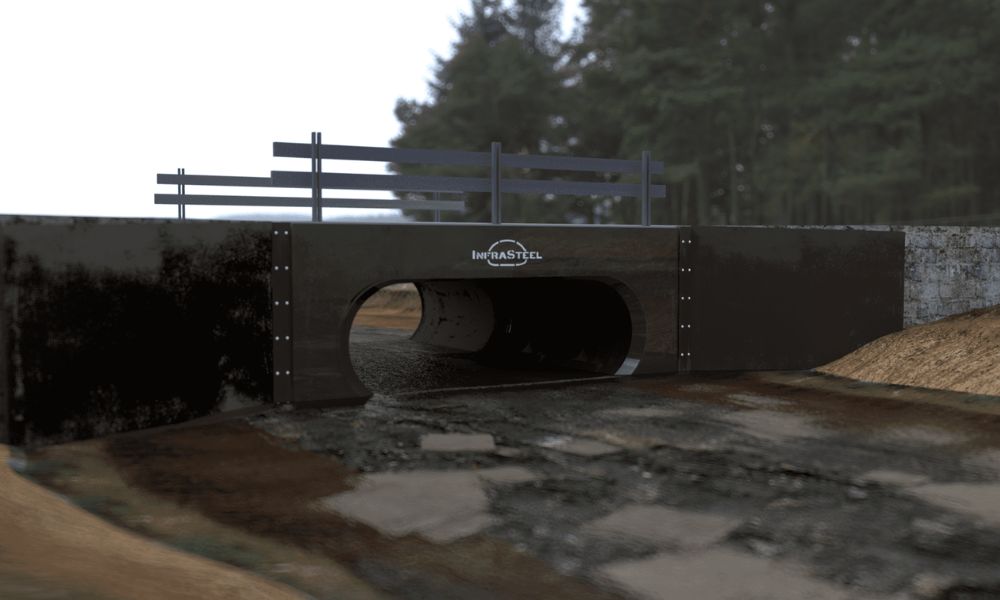According to a 2022 FEMA flood mitigation handbook, typical causes of drainage issues on roadways include too little capacity, flooding, storm surges, and debris that becomes lodged in a culvert. All these things can cause damage to the culvert and erosion around the culvert. Erosion around or at the ends of a culvert impacts its ability to direct water downstream.
Fortunately, there are many ways to reduce the risk of drainage problems and culvert damage. The following are five ways to minimize erosion around road culverts.
Installing Proper Culvert Outfalls
One of the most important steps in preventing erosion around road culverts is to ensure that the culvert has been constructed properly in the first place. Municipalities must grade and maintain outfalls to reduce the velocity of water exiting the culvert and prevent scour.
Increasing Capacity
Increasing the capacity of culverts is an effective way to reduce floodwater velocity, which can decrease erosion. Municipalities can do this by expanding the circumference of the culvert and using a larger pipe. Lining the interior of the culvert with concrete or installing reinforced polymer liners can create more height or width.
Stabilizing Embankments
Stabilizing embankments around road culverts reduces erosion. Vegetation such as grasses, trees, or shrubs can stabilize the soil along the banks of a culvert, and rock revetments strengthen the embankment and protect it from erosion.
Performing Regular Inspections and Culvert Rehabilitation
Another effective way to minimize erosion around road culverts is to ensure that you keep the structure maintained. This includes inspecting for any signs of wear and tear, such as cracks or corrosion, which can affect the integrity of the culvert over time.
Rehabilitation can help degraded culverts that are in danger of erosion. A custom elliptical culvert pipe liner inserted within the existing elliptical culvert pipe will stabilize the structure and extend the culvert’s design life.
Installing Riprap
Riprap, or loose rock and stone, is an effective way to protect a culvert’s outfall from scour. It slows the flow of water and keeps the sediment from washing away from embankments. Riprap can also reduce bank instability and protect against flooding caused by overflowing culverts.
Culverts exist to facilitate drainage and prevent flooding on roadways. These five ways to minimize erosion around road culverts will help municipalities stay prepared for heavy storms that can cause flash flooding, road damage, and sudden increases in the volume of water flowing through culverts under roadways.



Leave A Reply